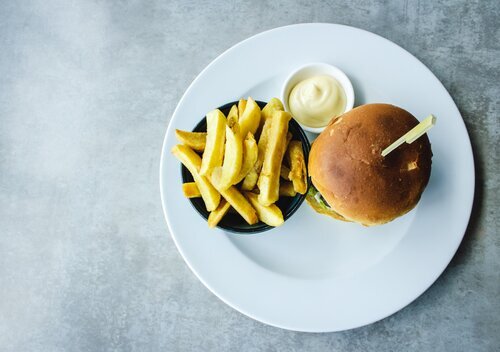Have you experienced symptoms that just won’t go away – digestive whoas, reflux, brain fog, headaches, joint discomfort, weight gain, menstrual pain, eczema…or maybe you don’t feel quite right – questioning your quality of sleep, energy, mood, or the frequency of which you’re under-the-weather. Unfortunately, we see people suffer these symptoms for a long time without realizing it may be connected to the food they’re eating.
These, among many others, are certainly all valid reasons to consider an elimination diet, particularly when your symptom or condition has failed to respond to conventional medical treatment. The struggle is that many who experience adverse reactions don’t realize that a specific food is causing a symptom. Food is often overlooked as a contributing factor to chronic health issues, while food sensitivities are not always as easy to decipher.
Before we dive in, let’s do a quick review of food sensitivities. Food sensitivities, or an IgG mediated response, can cause a delayed reaction, by hours or up to four days later! No wonder it can be tricky to figure these out! Symptoms of food sensitivities vary from person to person, and can depend on the particular food consumed. Symptoms may include headaches/migraines, mood swings, sleep issues, anxiety, depression, bloating, irritable bowels, runny nose, sinus problems, ear infections, asthma, joint pain, nausea, fatigue, hives, rash, dry skin, and acne, to name a handful. Let’s keep this definition in mind and discuss how we can tackle!
So what exactly is an Elimination Diet and why is it helpful?
The concept of an Elimination Diet involves removal of foods that commonly cause symptoms, followed by a structured re-introduction, that can help identify foods triggering symptoms. It costs nothing extra beyond your normal grocery expenses and is something we can all do at home! The process looks like this:
Step 1: Prep! Read through this process and organize your thoughts, pantry, and fridge! Keep all the foods in close reach that you’ll need throughout the elimination phase and start cutting back and cutting out those foods that won’t serve you. Research a few new recipes and find a close friend or loved one you can count on to support you along the way.
Step 2: Complete elimination of all possible food offenders. During this time, symptoms should improve or disappear. Elimination of this physical stress provides the body an opportunity to heal and is recommended for 3-6 weeks. Choose a duration you are comfortable with, or work with your healthcare provider who can help you make this determination.
Foods to eliminate during this phase:
Alcohol
Corn
Coffee and all caffeine-containing food beverage
Dairy products (butter, cheese, milk, yogurt, etc)
Eggs
Fried foods
Gluten-containing foods
Peanuts
Processed meats
Shellfish
Soy
Sugar
Vinegar/Fermented food
Yeast-containing foods
Other foods to consider if a more comprehensive approach is desired: nightshade veggies (eggplant, peppers, potatoes, tomatoes), starches (beans & grains), foods you consume regularly every day (your body may see these as inflammatory triggers if you’re battling leaky gut!), foods you crave constantly
So we realize you’re reading the list above and wondering if there’s anything left to eat, right? The good news is there’s PLENTY left to eat – we’re left with the food that should be included in a balanced, healthy diet! Phew!
Food to incorporate during the Elimination phase:
Beverages: water, water and more water (add lemon!), decaf green and herbal teas
Fruits: stick to 1 cup/day of fresh/frozen organic berries You may need to eliminate or decrease fruit consumption if you have chronic yeast or bacterial overgrowth
Grains: organic brown rice, buckwheat, millet, quinoa
Legumes: lentils
Oils/fats: coconut, olive, sesame, walnut
Meat: organic, pasture-raised chicken, lamb, turkey and wild-caught salmon
Nuts/nut butters and seeds (all except peanuts)
Plant-based milk (unsweetened almond, coconut)
Spices
See, that’s not so bad, is it?
During the Elimination phase, the focus is consumption of an array of nutrient-dense foods and antioxidants to promote healing and detox of the gut, kidneys, and liver. Not only is elimination of the above foods essential, but so is elimination of the “digestive non-essentials”. Aim for one comfortable bowel movement daily, by drinking plenty of water and including fiber-rich veggies!
Following the weeks of complete elimination of the common food offenders, a reintroduction process begins. Here we go…
Step 3: Food re-introduction or “challenge”. One food is added back at a time. Choose a food you’ve missed the most, as order is not super critical. Beginning at breakfast, eat a generous serving, and observe whether or not there is an association with negative symptoms. Do you feel nauseous? Light-headed? Does your joint pain return? How do you really feel?
Eat an additional portion of that food at lunch, followed by dinner. It’s helpful to record any symptoms to observe correlation on both Day 1 and 2. If there is no reaction during these 2-days, introduce a new food on Day 3, and monitor through Day 4. If symptoms are provoked, wait until they clear to try a different food. Any problematic foods can be reintroduced at the end if you wish to try again.
If you are rather certain a particular food was causing symptoms prior to elimination (including a true allergic response), keep that food out of your diet without adding back in.
You’ve finished your “challenge” phase, so now what? First, give yourself a big hug! An Elimination Diet takes discipline – changes in habit and familiarity that can be uncomfortable. You’ve completed an important step in your journey to health and wellness.
Regarding your dietary choices, if certain foods continue to offend, keep them out of your diet. Incorporate those foods that keep you energized and feeling GOOD! If things aren’t feeling so clear or this process seems overwhelming, we recommend consulting with your healthcare provider who has knowledge in this topic and can organize and guide you along the way. Proper elimination, healing, and nutrition choices can make all the difference in your overall health.
We believe in you, Blossoms! You can do it!
Sources:



